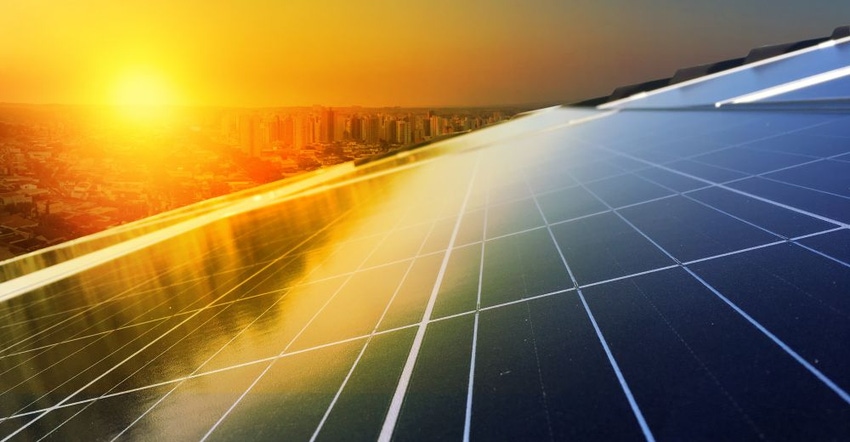Catch Some Rays: Making the Most of Your Self-Storage Rooftop With Solar Panels
A self-storage rooftop represents a lot of unused square footage. Read why solar panels are an excellent way to use that space while cutting costs, generating clean energy and being an eco-friendlier business.

With costs dropping and attractive financing options available, there’s never been a better time to install solar panels at your self-storage facility. Though some operators choose to install solar on canopies that cover their outdoor vehicle storage or use an open field for a ground-mounted array, many find the most valuable space is their rooftop.
Rooftop solar leverages a previously underused asset. Imagine how much additional square footage your building would have if you could make use of that space. Though some property owners in other real estate sectors convert rooftops to patios, add skylights or find another way to put that area to work, those options don’t always make sense and can be costly. In contrast, solar can actually save you money on electricity costs and establishes your business as eco-friendly.
Let’s examine some key considerations when it comes to a rooftop installation.
Minimal Impact
The solar industry goes to great lengths to ensure rooftop installations are as unobstructive as possible. The process starts with slip sheets to protect the existing surface. Solar racking is then built on top of the sheets and held in place by small concrete blocks. The process is similar to how you might anchor a satellite dish, air-conditioning unit or any other equipment on the self-storage roof. Finally, the solar panels are mounted to the racking to collect energy from the sun. Altogether, the added weight is only a few pounds per square foot.
Layout
Before installing a solar-panel system on your self-storage rooftop, engineers will consider setbacks from parapet walls, HVAC units, exhaust vents, antennas and other items. These are required by code in certain areas, but they’re also a good common practice.
Because some roofs have a variety of obstructions, solar-design professionals may relocate vents and other equipment to make the installation more efficient. Instead of a haphazard approach that places a few panels here and there, it’s better that panels be consolidated. This helps with wiring and reduces installation costs.
Electrical Connection
Once the rooftop system is installed, the electrical team will run conduit from the array to the property’s main electrical panel. The solar industry follows strict safety guidelines for this process, including metal conduit in some situations, a system-disconnect switch at ground level, and voltage limits.
Once your connection is complete, the building is ready to receive clean, solar electricity. Local net-metering standards will allow you to swap electricity with the grid, so you can use it anytime. This billing mechanism makes it easy to predict savings over the long term and benefit throughout the day, even if the sun isn’t always shining.
Self-Storage Presence
By some estimates, the self-storage industry represents nearly 2 billion square feet of rentable space across the U.S. Facility rooftops are ideal for solar installations because they’re relatively free from obstructions, and properties have a high rooftop-to-occupancy ratio. This allows storage operations to offset a higher portion of their electricity use than other properties and save even more on utility costs.
Extra Space Storage Inc., a real estate investment trust and third-party management firm, is among the operators that have invested in solar energy as a company strategy. The company began installing panels at its facilities more than a decade ago, and last year committed to install 65 rooftop solar arrays across eight states, which are expected to save $900,000 during the first year and $22.5 million over the 25-year life of the systems.
Getting Started
Solar is an easy way to leverage available roof space and lower your self-storage electricity costs. It’s also a way to support corporate sustainability initiatives and can serve as a differentiating factor when marketing to potential customers.
When considering a solar project, look for a provider with years of experience in commercial installations. The right partner should be able to help you with planning to maintenance and everything in between.
Matthew Brenn is senior manager of business development at Pivot Energy, a Denver-based solar-energy company that develops, finances, builds and manages community and commercial projects nationwide, offering a range of services and software. Matthew has seven years of experience in the commercial and residential solar space. He’s passionate about clean-energy solutions and pushing sustainability to the forefront. For more information, call 888.734.3033; email [email protected].
About the Author(s)
You May Also Like





